![]()
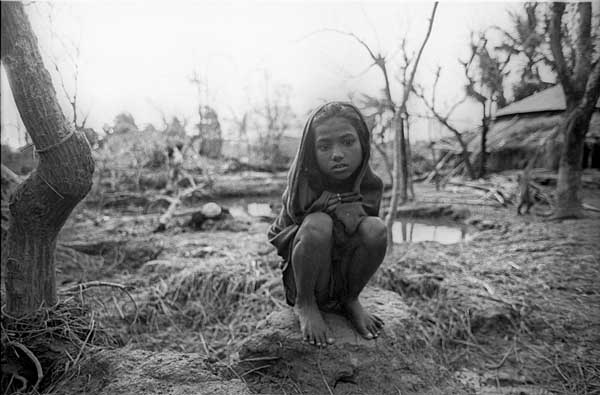
Orphaned girl by the remains of what was her home. Anwara. Bangladesh. 1991. ? Shahidul Alam/Drik/Majority World
“The dark cyclone shelter was packed with people, mostly women and children, some crying, some screaming. It was chaos. And then there was the loud knock. We struggled to open the door against the wind, The whole night sky tried to get in through the small gap we had made. The man pushed his way in as we struggled to lock the door again. He was a strong burly man, but he was shaking. “Give me a biri (hand rolled cigarette)” he said. I got angry. “Can’t you see what is happening here? What state people are in? And you want a biri?” He wasn’t harsh, but his stare was cold. “Agaro jon re puita aisi. Biri de.” (I’ve buried eleven. Just hand me a biri).”
This had been 1991. We had crossed into Hatia, and the ride across the choppy sea had left us all rattled. Slowly people spoke of their experiences on the night of the 29th April 1991, when the sea had become a wave.
This time I was stranded in Kathmandu when I received the news from Rahnuma. She was dreading the worst. The ticker tape on CNN said the storm was 100 kilometres from Dhaka, when I finally went to sleep in the early hours of the morning. This was the time of Internet and mobile phones, but the Net was down and the network was too congested to get calls through. Irfan managed to send a text the next day asking me to charge my mobile. Dhaka had no electricity.
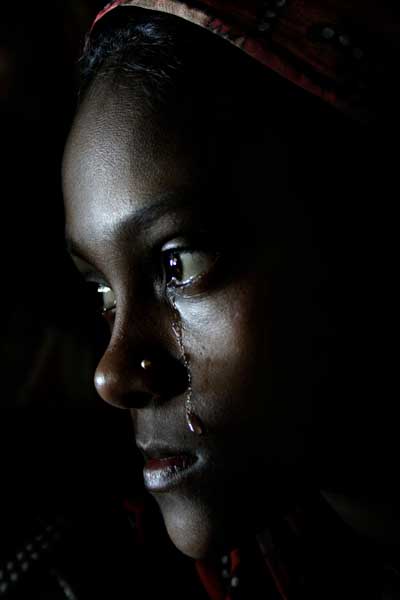
Cyclone SIDR. Dublar Char, Bagerhat, Bangladesh. November 26 2007. ? Asad/DrikNews
Joshim was waiting as usual at the airport. At least there was electricity there. Some of the street lamps were lit. I managed to make it home in the early hours of the morning. Most of Dhaka was then in darkness. We did have electricity in the flat, but it soon went. Ragni and Nunni (two of our many children) were both fast asleep. Ragni went off this morning to an FK meeting, an exchange partnership we are involved in. The Net is up again, at least partially. Nipun is designing the majority world flyer. Life goes on. We don’t yet know the extent of the damage, but the figures are undoubtedly high. We are fine. Many others sadly are not.
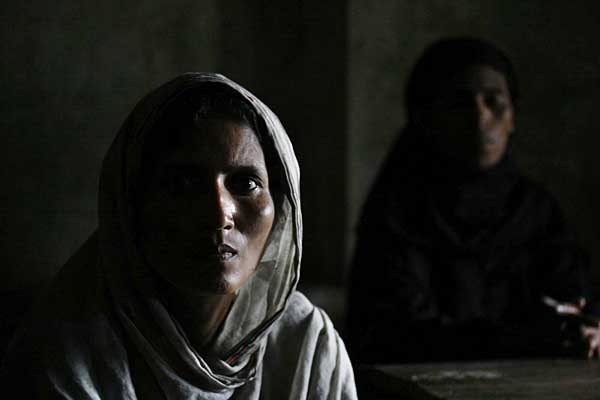
Women in a cyclone shelter centre at Coxbazar, Bangladesh. Cyclone SIDR. November 16 2007. ? Munir uz Zaman/DrikNews
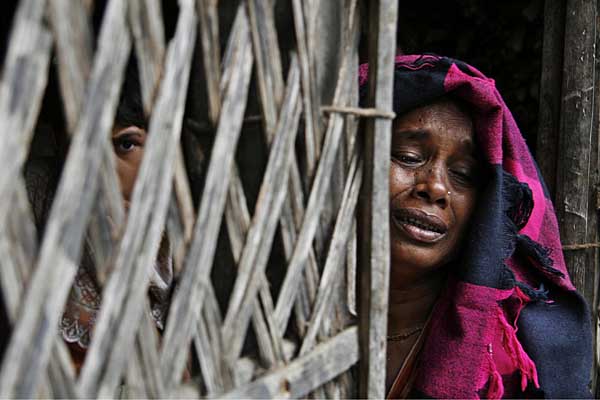
A woman weeps for her lost relatives. Cyclone SIDR. Khulna. Bangladesh. 17th November 2007. ? Tanvir Ahmed/DrikNews
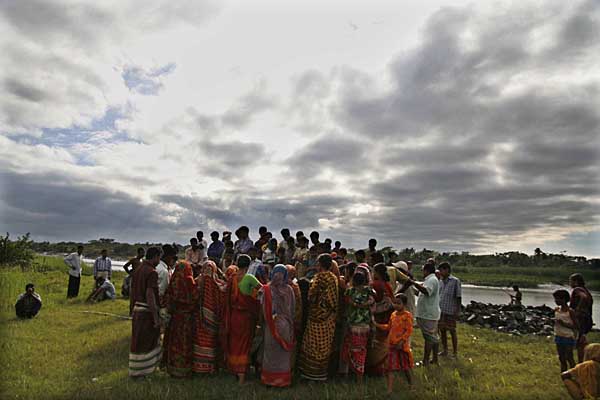
Relatives and neighbours bury their dead by the Rupsha River. Cyclone SIDR. Khulna. Bangladesh. 17th November 2007. ? Tanvir Ahmed/DrikNews
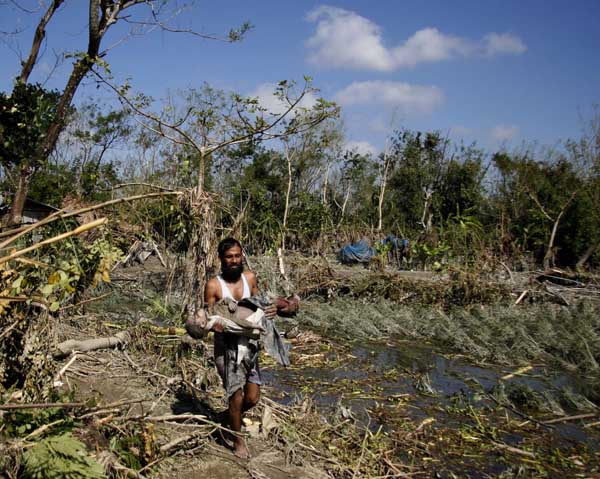
A man carries his grandchild?s dead body from debris of the house. Cyclone SIDR. Shoronkhola, Bagerhat, Bangladesh. November 19 2007. ? Tanvir Ahmed/DrikNews
My bike was at Drik, so I took a rickshaw to the office. The rickshawalla’s name was Shah Alam. Our similar names added to our camaraderie. He was from Bhola. They had lost twelve. “But I have a mobile” he said sheepishly. Almost apologising for this perceived opulence. “At least this way I can talk to my parents.”
Abir and Munir are already out there. Jessica is preparing to leave for Patuakhali. In 1991, I had rushed back from Feni and managed to bluff my way into a military helicopter to do a story with Barbara Crossette for the New York Times. Sending the picture through the old fax transmitter in the T&T office took hours. With most connections down, we had struggled to get the picture through. And then I was out again. It was only when I met James Nachtwey in Chittagong that I found out that my picture had made the front page of the Herald Tribune. Now as I sit behind a computer screen typing text and booking tomorrow’s flight to Sri Lanka, other photographers are headed for the coastline.
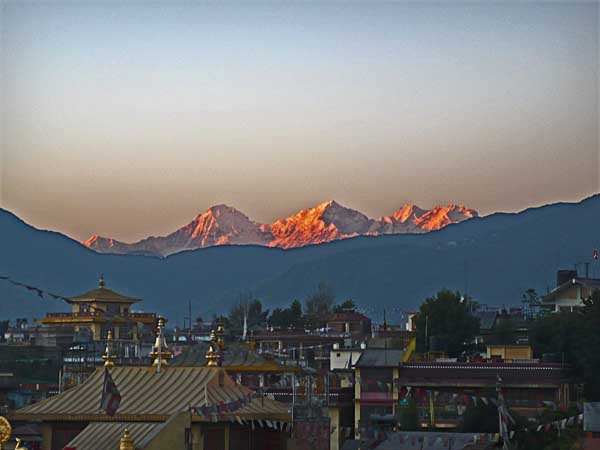
Sunset on the outskirts of Kathmandu. Nepal. 16th November 2007. ? Shahidul Alam/Drik/Majority World
Last night as we waited for yet another hugely delayed GMG flight, Nayantara took Tutul and I to catch the last glimpse of sunlight in the mountains outside Kathmandu. The chanting of the priests, and the gentle bells from the stupa below made Dhaka seem far away. We even stopped to give an interview on CJMC’s new FM station. Back home Bazlu bhai and his team have been pushing for permission for community radio for years. A much needed tool in times of crisis. The airwaves here have been reserved for propaganda. A once outspoken media sings the glory of the military and the untiring efforts of the government. Some with reluctance.
Saving people’s lives seems a far lesser priority.
——
Find link for interview on Radio France Internationale (streaming)
Afsan Chowdhury’s interview on climate change in Bangladesh
or download file: sa-2nd-clip-from-french-radio-on-cyclone.mp3
article-on-natures-fury.pdf (from the Book: Communicating Disasters, by TVEAP and UNDP)
Skip to content
Musings by Shahidul Alam
